Current as of: November 6, 2025 - 17:04

Essential Peru Trip Notes
- Ways to Travel: Guided Group
- Destination: Peru
- Programmes: Culture
-
Activity Level:
3 out of 7 - Moderate
- 15 Days: Land Only
- Ages: 16+
- Trip Code: APD
- Carbon Footprint: 26kg CO2e
Trip Overview
Discover the highlights of southern Peru, from Nazca to Arequipa
Journey through the vastly contrasting visual and cultural landscapes of Peru, including coastal desert, snow-capped Andean peaks, the altiplano and cloud forest. Along the way, visit world-renowned highlights, including: the mysterious Nazca Lines; Machu Picchu; Lake Titicaca, where we spend the night in an island homestay; and the 9,843ft (3,000m) deep Colca Canyon. We also encounter traditional culture, condors, llamas, and a warm welcome from the Peruvian people.
At a Glance
- Accommodation: 1 Superior night (hotel), 12 Classic nights (hotels), 1 Simple night (homestay)
- Travel by internal flight, train, boat and private bus
- Group normally 5 to 16, plus leader. Minimum age: 16
Highlights
- Discover the best of Peru, from world-famous landmarks to Andean peaks, cloud forest and the islands of Lake Titicaca
- See the Nazca Lines, one of the great archaeological mysteries
- Explore the Inca ruins of Machu Picchu, a New Wonder of the World
- Stay with a local family on the traditional island of Amantani in Lake Titicaca
- See condors soaring on the morning drafts at the Colca Canyon
- Wander through the colonial city of Arequipa and the Santa Catalina Convent
Is This Trip for You?
This trip is graded Activity Level 3 (Moderate). For more information on our trip gradings, visit the Activity Level Guidelines page. If you have any queries about the difficulty of the trip, please contact us.
Walking: Cuzco, Arequipa and many of the Inca sites (including Machu Picchu) are built on hillsides and sightseeing often involves walking up and down steep streets or on uneven steps or terraces. As such, you should have a good level of mobility and a reasonable level of fitness.
Altitude: The altitude can make physical activity feel more tiring than at sea level. As this trip spends considerable time at altitude, we ask you to refer to the Altitude Warning within the Trip Notes for more information and advice on how to limit the effects of altitude sickness. The tour allows for gradual acclimatisation, visiting Abancay (7,874ft/2,400m) before moving on to Cuzco (11,155ft/3,400m), then Lake Titicaca (12,467ft/3,800m). Although we do not linger there, the maximum altitude visited on this trip is at Patapampa Pass (16,109ft/4,910m), which we drive over near Chivay, Colca Canyon. Please ensure your travel insurance covers you up to this altitude. It can be cold at these altitudes, particularly from May to August (although these months benefit from lower rainfall). You should bring appropriate clothing.
Journeys: This is a busy itinerary encompassing the highlights of southern Peru with some long drives and early starts. The private buses used are comfortable and the scenery is outstanding. There are several stops to break up long journeys. The road between Nazca and Cuzco becomes increasingly winding as we climb higher into the mountains, and this, combined with the increase in altitude, may affect you if you are prone to travel sickness.
Strikes: Strikes are not uncommon in Peru and while these are generally peaceful protests, they can result in roadblocks and disruption to travel. In this event, your leader will amend your itinerary if necessary to minimise the impact.
Visiting Machu Picchu a second time: If you wish to visit Machu Picchu twice, you need to purchase a second entrance ticket. Tickets are sold out months in advance, so please let us know upon booking whether you would like a second ticket and we will do our best to secure one for you. You need to provide us with your preferred entry time (6am, 7am, 8am or 9am). The second visit takes place on the morning of Day 8 and follows the same circuit as the previous day. You will not have a guide with you for your second visit.
Please note, it is essential you read the Machu Picchu regulations in the Important Information section of the Trip Notes before you book this trip.
Water safety: This trip includes time by a lake, river or sea, where there may be opportunities to swim. You should always seek local advice before deciding whether to swim. Open-water or wild swim spots should be treated with extreme caution. Information on how to keep yourself safe while swimming is shown here.
Adult min age: 16
Min group size: 5
Max group size: 16
Itinerary

Land Only
- Start City: Lima
- End City: Lima
Land Only Itinerary
Welcome to Lima, the busy capital of Peru. There’s plenty of adventure on your trip, but today’s all about settling into the hotel. You will be met at the airport and transferred to our hotel in the Miraflores district of Lima. There will be a notice board in the hotel reception with details of where and when the group welcome briefing will be held.
Accommodation: Hotel El Tambo 1 (or similar)
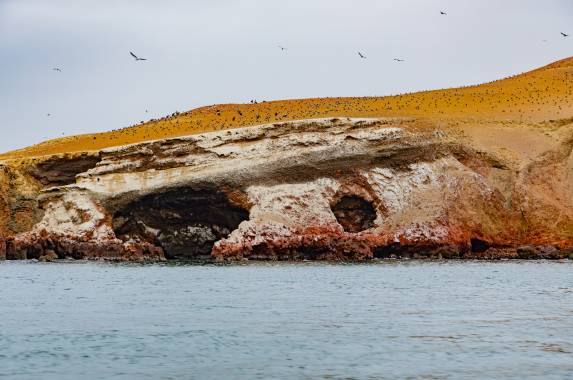
We set off early this morning (around 5.30am) and drive south from Lima until we reach the port of Paracas (a four to five-hour drive). The Ballestas Islands lie a short distance off the coast here and are home to one of the highest concentrations of seabirds in the world – we visit them by boat.
On the outward journey, we pass the curious pre-Inca Candelabra geoglyph, a huge (more than 490ft/150m high) three-pronged trident shape etched into the sandy hillside, the origin and purpose of which remains unknown (although there are many theories). Upon reaching the islands we explore the caves and rock archways by boat and observe the sea lion and fur seal colonies as well as humboldt penguins and an array of birds such as cormorants, pelicans, tendrils, and Peruvian blue-footed boobies.
We take open-top motorised boats, which are shared with members of the public (occasionally the sea is too rough and the boats can’t operate). Take heed of seabirds above – it is advisable to wear a hat. The boat trip lasts around two hours. Back on dry land, we drive for an hour or so to Ica, the heart of the Peruvian wine-growing region, where we spend the night.
Accommodation: Hotel Villa Jazmin (or similar)
Upgrade to a deluxe king room today – speak to your sales representative for more details
We drive towards Nazca, stopping to visit the viewing platforms overlooking the Nazca Lines. These are one of the great archaeological mysteries, consisting of enormous drawings and patterns etched in the desert sand.
In the afternoon, there is usually time to take a scenic flight over the Nazca Lines (additional cost), weather permitting. Due to the small planes used, this is not suitable for those with a fear of flying or who suffer from travel sickness. As an alternative, your leader can help arrange optional visits to the nearby burial grounds, Antonini Museum or the planetarium.
Accommodation: Casa Andina Hotel/Alegria (or similar)
We turn inland from the coastal desert today, climbing high into the Andes on a long (around 12 to 13 hours) but spectacular drive. We’ll pass through the largest vicuña reserve in the country, so look out for these smaller wild relatives of the llama. This region has only recently become easily accessible to tourists due to an upgrade of the Abancay/Chalhuanca road. The altitude here can make physical exertion difficult; the highest point we reach today is Negro Mayu, a pass at 15,092ft (4,600m) above sea level. We recommended that you rest in the evening. Tonight, we stay in Abancay on the road to Cuzco.
Accommodation: Hotel de Turistas Abancay (or similar)
We set off towards Cuzco this morning, stopping to visit the Inca Saywite stone and Tarawasi ruins. The glaciated summits of the Vilcabamba mountain range and the descent into the Apurimac River valley demonstrate the dramatic contrasts of the Andes; expect stunning scenery throughout today’s roughly seven to eight-hour drive.
It is recommended to take it easy upon arrival into Cuzco and to drink plenty of water to allow your body time to acclimatise to the altitude (11,155ft/3,400m).
Accommodation: Hotel Casa Andina Standard Catedral (or similar)
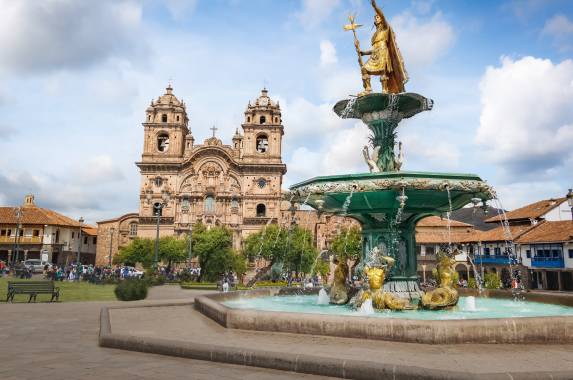
To help you acclimatise, we embark on a relaxed walking tour this morning, which takes in the historic buildings and winding streets of Cuzco. The rest of the day has been left free for exploring on your own. The Plaza de Armas is a fantastic spot for people watching, and the Koricancha Sun Temple in the Santo Domingo Church and monastery is worth a visit. The Mercado San Pedro is the place to try local produce and there are many handicraft markets to shop for souvenirs, such as alpaca jumpers and scarves.
Outside the town are more Inca ruins, notably the fortress of Sacsayhuaman where the Inca armies made their last stand against the conquistadors. A combined entrance fee (tourist ticket) for these sites and many others is recommended – please see the Optional Excursions section below for prices. Sightseeing excursions to places outside Cuzco, including the Sacred Valley of the Incas, are also available. Please ask your tour leader.
Accommodation: Hotel Casa Andina Standard Catedral (or similar)
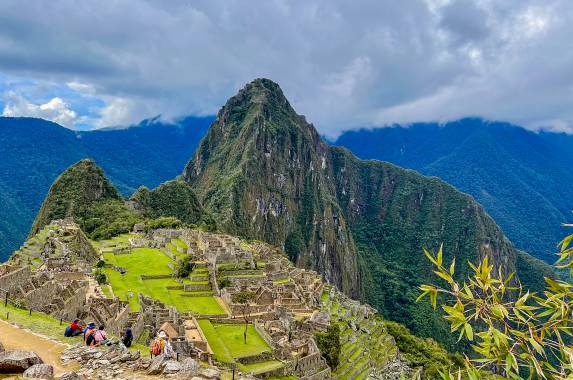
For most people, the highlight of the trip is the visit by train to one of the greatest ruins in the world, the lost city of Machu Picchu. This is one of the architectural and engineering marvels of the ancient world, in a mountain setting of staggering immensity. The Spaniards never found it; the Incas left no records of it, so Machu Picchu remains a great enigma, a city lost for centuries in the jungle until it was rediscovered in 1911 by the American historian Hiram Bingham.
We transfer (approximately two hours) to Ollantaytambo railway station to catch a train to Aguas Calientes (the town below Machu Picchu). The railway line follows a beautiful route through the Urubamba River valley. In the afternoon, we take a short bus ride up the winding road to Machu Picchu for a guided tour of the ruins. Visiting in the afternoon tends to be quieter than the mornings and the mist that shrouds the ruins at dawn has usually dispersed.
Please note that exploring the ruins involves a reasonable amount of walking, including up and down steep and uneven stone steps.
Accommodation: Terraza de Luna (or similar)
This morning has been left free for you to relax and enjoy the buzz of Aguas Calientes. Alternatively, if you have already purchased a second entrance ticket to Machu Picchu, this morning is free for you to explore the once-lost city on your own. Please read the Is This Trip for You section for information on booking your tickets.
In the afternoon, we board the train back to Ollantaytambo and then continue by minibus to Cuzco, arriving in the late evening.
Accommodation: Hotel Casa Andina Standard Catedral (or similar)
We have a final chance to enjoy the sights and shopping of this beautiful city. If you would like something more active, there is an array of optional activities available from Cuzco that your leader can organise. These include paddleboarding on a lake, mountain biking, or a combination of via ferrata and zip-lining in the Sacred Valley.
Accommodation: Hotel Casa Andina Standard Catedral (or similar)
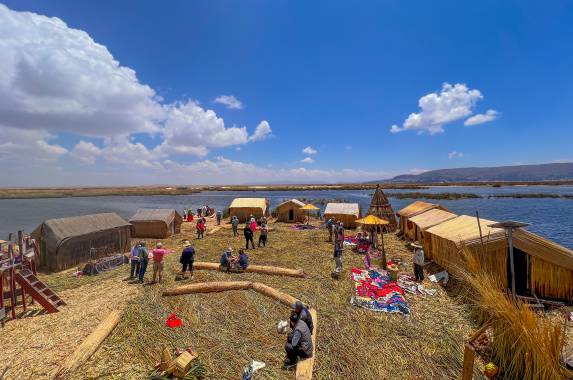
Today we travel for around 10 hours along the Vilcanota River and onto the altiplano, the high plains separating the Andes from the jungle. Although it is quite a long drive, the views are often spectacular. There are scheduled stops at interesting sites to help break up the day and we will get to appreciate the immensity of the Andean landscapes. This afternoon, we arrive at the shores of Lake Titicaca (12,467ft/3,800m above sea level) and board a boat for our trip to Amantani Island. A hike around the island offers great views across the lake, while the night spent with a local family is a fantastic cultural insight into lives very different to our own. A packed lunch is included today.
Accommodation: Amantani Island homestay (basic)
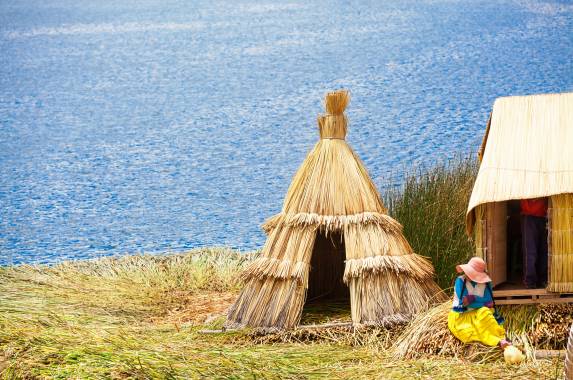
We explore the island in the morning before boarding our boat for the three-hour journey to Puno on the lakeshore. On the way, we visit Uros Island. The Uros have been living on reed rafts for centuries, and although many have now moved to the mainland there are still a couple of thousand who remain on the islands. A reasonable amount of their income is now provided by strictly regulated tourism, but they also still fish the lake and barter with mainland communities for daily essentials.
Accommodation: Casona Plaza Hotel (or similar)
Today we head across the altiplano again. This time we cross to the southwest, heading back towards the coast to the high Colca Canyon (a five to six-hour drive). En route, we see vicuñas and possibly flamingos, crossing the Patapampa Pass (15,781ft/4,810m) before descending into what is considered the second-deepest canyon in the Americas (the deepest, the Cotahuasi Canyon, is also in Peru). There is time in the evening for an optional visit to the hot springs near the main town of Chivay (11,926ft/3,635m) – a warming pleasure after the chill of Lake Titicaca.
Accommodation: Hotel Pozo del Cielo (or similar)
Upgrade to a superior room today – speak to your sales representative for more details
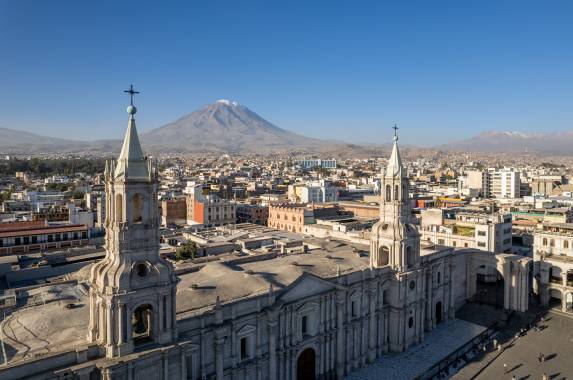
Rise early to view condors soaring on the morning drafts rising out of the canyon. We then ascend out of the canyon and cross Patapampa Pass on our way to Arequipa, which is known as the White City due to the pale volcanic stone used to construct many of its colonial buildings. The picturesque city has a year-round pleasant climate and is surrounded by towering volcanoes, including the near-perfect cone of El Misti.
Accommodation: Su Majestad Hotel (or similar)
In the morning we visit the huge, serene convent of Santa Catalina. Built in 1580 and only opened to the outside world in the 1970s, it offers a rare insight into the lives led by the nuns and has changed little through the centuries. There are still around 20 nuns living in the northern corner of the complex. In the afternoon or evening we fly to Lima where we will transfer to our hotel in Miraflores.
Accommodation: Hotel El Tambo 1 (or similar)
You’ve explored a New World Wonder, seen the Nazca Lines and stayed on a Lake Titicaca island; but today, we start our return journeys home, although there may be time for optional tours of Lima, including visits to the Gold Museum and tours of the historic downtown.
Alternatively, speak to your sales representative to join our add-on tour to the Amazon rainforest – an into-the-wild adventure to explore lakes, rivers and jungle trails in search of incredible wildlife.
Post-trip Extensions
Amazon Rainforest Add-on (post-tour, from Lima)
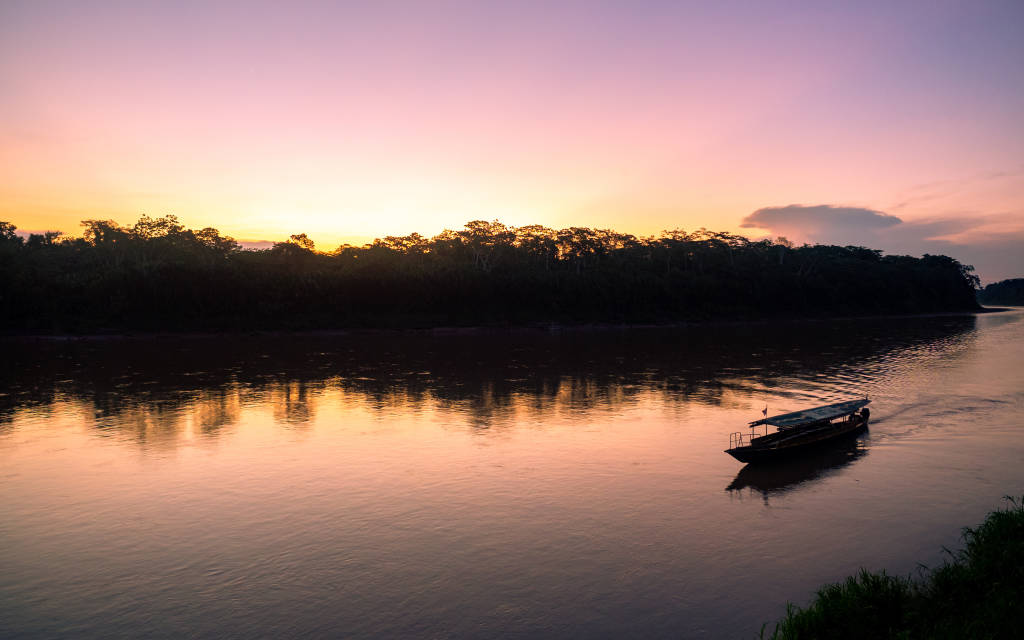
Easily accessible via a short flight to Puerto Maldonado from Lima, the Amazon is the largest rainforest in the world and home to an astonishing array of wildlife and plant species. Spending three nights at a lodge in the incredibly rich Tambopata Reserve, we use motorised canoes to explore lakes and rivers, and follow jungle trails to explore dense forests.
The detailed itinerary can be found here, or speak to your sales representative for more details.
Altitude Warning: This trip includes one or more nights over 9,845ft (3,000m) above sea level, where there is a genuine risk of being affected by acute altitude illnesses; if left untreated, this can be life-threatening. Most should expect to experience some mild symptoms of altitude sickness, such as headaches, shortness of breath or sleeplessness. Our leaders are trained to identify symptoms of severe altitude illnesses and, if a customer requires extra care, arrangements such as a rapid descent will be made.
Exodus itineraries are informed by the Wilderness Medical Society (WMS) Guidelines for the Prevention of Altitude Illnesses and designed to allow for adequate acclimatisation. Due to terrain and/or logistical factors, there may be nights where the sleeping altitude gain is more than 1,640ft (500m), increasing the risk. The WMS highlight that because the rates of acclimatisation and physiologic responses to high altitude vary considerably between individuals, the recommendations given, although generally effective, do not guarantee successful prevention. Participants should be aware of the inherent risk posed by altitude.
Several medical conditions or medications can affect a person’s ability to acclimatise, making them more susceptible to acute altitude illnesses. Those with pre-existing conditions, such as heart or lung conditions, those who have suffered with altitude sickness before, or those with concerns about overall physical ability, should consult their doctor before booking. The drug Diamox (acetazolamide) may aid acclimatisation in some individuals. Those considering using Diamox should speak to their doctor about the drug, its suitability, side-effects, and a prescription. Please note, while we endeavour to assist all our customers in achieving their goals, there may be times when a leader decides to delay or stop someone’s ascent based on their condition.
If you are not taking out Exodus Travel Insurance, make sure your policy covers you up to the maximum altitude on this trip (if trekking in the Himalaya your policy should also cover the use of a helicopter for emergency medical evacuation).
Accommodation
Hotels and Titicaca homestay
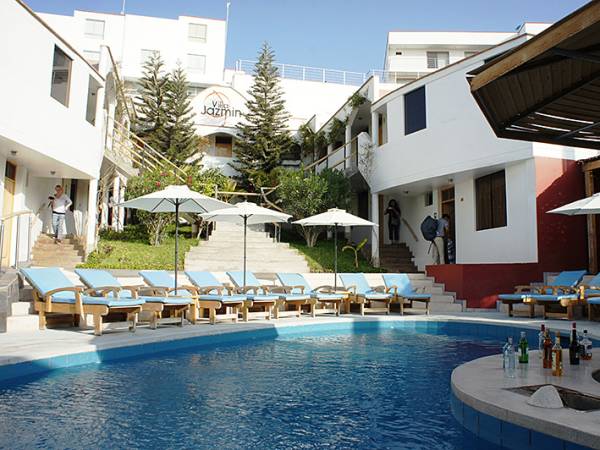
The properties selected for this Peru exploration are a blend of three-star quality and comfort, often within easy walking distance of the local attractions. Our Lima hotel is a welcome escape from the city bustle, while our Cuzco hotel is centrally located in the historic centre. A highlight of this tour is our ‘live like a local’ Amantani island homestay, which allows us to experience Andean warmth and hospitality.
Upgrade your room on Day 2 and Day 12 of the itinerary – speak to your sales representative for more details.
Below are some of the standout places we stay:
Lima: El Tambo 1 (night 1)
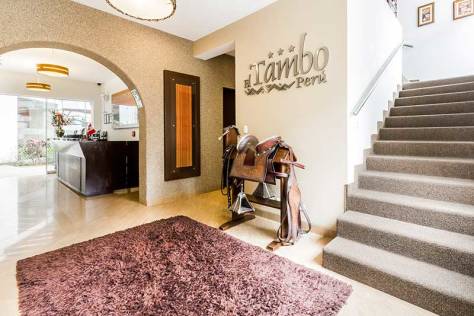
El Tambo 1 (uno) is our three-star Lima hotel in the lively tourist district of Miraflores. It has a restaurant and lovely small bar near the courtyard garden, plus easy access to local sites, such as Kennedy Park, the Larcomar Shopping Center and the Miraflores clifftop promenade where you can enjoy great views of the Pacific Ocean.
Ica: Hotel Villa Jazmin (night 2)
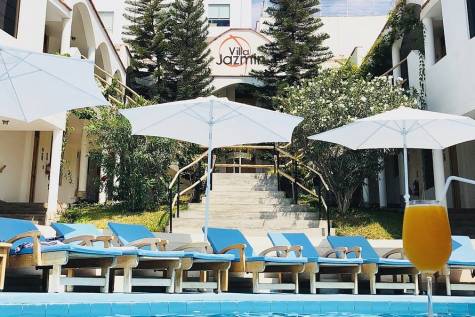
Surrounded by dunes and pisco distilleries, Hotel Villa Jazmin is an oasis of comfort in Ica. After a day of touring in the desert sun, Villa Jazmin invites you to relax by the pool and enjoy a cold drink from the bar (we recommend a pisco sour made with locally produced pisco).
Amantani island: Homestay (night 10)
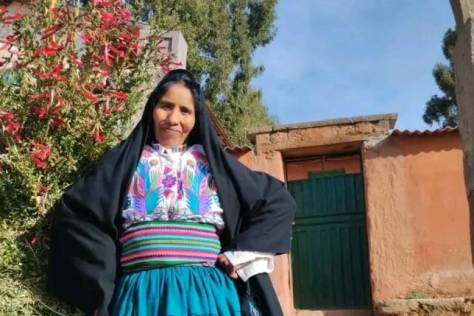
Our trip includes an unforgettable homestay with a local family on Amantani island. This wonderful community project has guests staying with multiple families; the hosts share in the proceeds, which benefits both the Amantani community and the visitors who enjoy and learn from this unique cultural experience.
Colca Canyon: Hotel Pozo del Cielo (night 12)
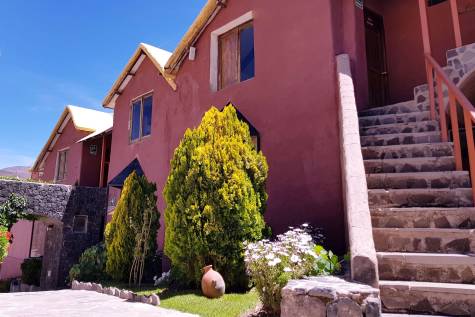
Experience the charm of Hotel Pozo del Cielo as we visit Colca Canyon and the surrounding communities. With an inviting ambiance, panoramic views and warm hospitality, it has cosy rooms, a relaxing bar and a restaurant serving Peruvian delicacies.
Worth knowing
- On our way from Nazca to Cuzco, we overnight in Abancay. Our Hotel de Turistas Abancay hotel is basic, yet functional for a restful overnight stay.
- Amantani homestay: The rooms are basic but clean and the beds have sheets and plenty of blankets to keep you warm. There are shared drop toilets but no showers.
- Single rooms can be booked for single supplement, subject to availability at the time of booking. This supplement covers single rooms throughout the trip, except for the homestay on Amantani island.
Single supplement from £ 460
Food & Drink
All breakfasts, one lunch and one dinner (at the homestay) are included. The tap water in Peru is not safe to drink. Free drinking water will be provided in large containers, so please bring a refillable bottle with you.
Hotel breakfasts are normally simple buffet-style affairs, usually including bread/toast and jam, cereal, sometimes eggs or a cooked dish, sometimes fruit, tea/coffee and fruit juice. Regrettably, we cannot guarantee that wheat- or gluten-free products will be available for breakfast in all locations – if you have an intolerance you may wish to bring your own breakfast food from home. Where lunch and dinner are not included we’ll visit a variety of local cafes and restaurants.
Peruvian cuisine is loved for its flavours and originality; it’s well worth digging into the local delicacies. Among these are ceviche (seafood or fish marinated in lime juice), lomo saltado (a Peruvian take on a beef stir-fry), and various hearty soups including the delicious quinoa soup. Other dishes include roasted cuy (guinea pig), alpaca steak. To drink, there’s pisco sour, the national beverage.
Transport
A variety of transport is used during this tour and vehicle types may vary depending on group size: travel is by train, boat, minibus/coach and one internal flight.
Airport transfers are by private car or minibus. The main road journeys are by private minibus or coach with heating/air-conditioning and may or may not have a toilet on board.
We travel by train (with Peru Rail/Inca Rail) from Ollantaytambo to Aguas Calientes (the town below Machu Picchu) and back in expedition/executive Class. Seating is four seats to a table and the carriages have panoramic windows and there is air conditioning/heating.
The boat on Lake Titicaca is private to our group, and there is a local guide from one of the Lake Titicaca island communities. The boat is enclosed as it can get cold at this altitude but there are large windows on all sides and an outside deck to the rear. Life jackets are provided.
Weather & Seasonality
The diverse geography of Peru results in a very varied climate between different regions. Lima and Paracas fall within the coastal desert region of Peru, with a mild climate and very little rain all year. From April to November, the sky is almost always grey and cloudy and the air is humid. Average daytime temperatures in Lima remain between about 18C-24C (64F-75F) during this period, with July and August typically being the coolest. Nights are also mild – typically 15C-18C (59F-64F). From December to March, the skies in Lima are clear and temperatures at their warmest, but elsewhere in the country this is the rainy season.
Cuzco and the Andes have a temperate climate. December to March is the rainy season in Cuzco/the Andes and April to November is the dry season; characterised by clear skies and strong sunshine in the mornings, sometimes clouding over as the day progresses. Daytime temperatures are usually pleasant (around 20C/68F on average) but night times only 5C-10C (41F-50F), except for May, June, July and August when days are cooler and nights are often close to, or a few degrees below, freezing. In the Andes, however, anything is possible at any time of year, including cloud, rain or even snow, and rapid, unexpected changes.
Lake Titicaca and Colca Canyon are high (12,460ft/3,800m and 11,810ft/3,600m above sea level respectively). The sun is strong but the air can be cold, and nights can be close to freezing. You will need to bring warm layers and a waterproof or windstopper. Aguas Calientes and Machu Picchu are in the cloud forest with large amounts of precipitation all year round as clouds move up from the Amazon Basin. Rain here can be heavy but is seldom prolonged. Cold fronts sometimes occur from July to August.
Peru is affected by the El Niño weather phenomenon where warming of Pacific Ocean surface water off South America drives a shift in the atmospheric circulation resulting in abnormally high levels of rainfall over parts of South America. These events occur at irregular intervals of two to seven years, and last nine months to two years. In El Niño years, temperatures in Lima can be much warmer than described above but it still rarely rains in Lima.
Joining Instructions
Key information
Start hotel: Hotel El Tambo Uno, Avenida la Paz 1276, Miraflores 15074, Lima
Phone: +51 1 2194080
Recommended arrival time: You can arrive at any time today. There will be a welcome briefing in the evening, but if you miss it the leader will update you separately
Airport: Jorge Chávez International Airport (LIM)
Getting to the start hotel
The start hotel is approximately 45 minutes’ drive from the airport. Exodus provides free arrival transfers to the start hotel from the airport for all customers. If you would like further information on joining this trip, please speak to your sales representative.
Catching your return flight
Exodus provides free departure transfers for all customers to Jorge Chávez International Airport (LIM) from the end hotel.
Please note, unless specified otherwise, the transfers will be to the start (or pre-tour) hotel and from the end (or post-tour) hotel and will be on the date on which the tour starts/ends; transfers to other hotels in the same city and/or on different dates may attract an extra charge. Transfers should be booked with your sales representative at least two weeks before the tour starts.
Full joining instructions including local emergency numbers will be sent to you as part of our Final Joining Instructions. If you do not receive these at least a week before departure, or require them earlier please contact our office or your travel agent.
Location start: Lima
Location end: Lima
What To Take
Essential Equipment
- A backpack or other smaller holdall – you are asked to pack a smaller overnight bag for the trips to Machu Picchu and Amantani Island (your main luggage is kept in a secure location)
- Water bottle
- Good sturdy shoes or walking boots
- Warm fleece jacket
- Long sleeve shirts & full-length pants
- Shorts
- Hats (for sun protection and warmth)
- Waterproofs
- Sunglasses
- High SPF sunscreen
- Insect repellent
Water included: Plastic bottles are a big issue in many countries where recycling isn’t yet widely available; they often end up in landfill or get burned. Both processes are harmful to the environment and we would like to reduce our impact here. For your trip, we provide an alternative to single-use plastic bottles to reduce the plastic used. This means that safe drinking water will be available throughout; all you need to do is bring a bottle to refill along the way. Please add this to your packing list.
Optional Equipment
- Swimwear (for hot springs)
- Hand sanitiser
- Small sewing kit with safety pins
- Torch (flashlight) – headtorches (head lamps) are ideal
- Cold-water detergent or laundry soap (biodegradable)
- Travel or inflatable neck pillow / personal music player / books etc for the long drives
- Sandals
Please note, walking poles are not permitted inside the ruins of Machu Picchu without a medical certificate detailing their necessity.
You may wish to take some souvenirs from home for your hosts on Amantani Island as these are always appreciated. Your leader can help organise this if you wish – practical and utilitarian items such as donations of clothes, ropes, shovels, cutlery are most useful.
Donations for porters
The porters we work with on the Inca Trail and other Andean treks are mostly from rural farming communities. If you have any old walking gear or warm clothing that you no longer need, or any unwanted warm children’s clothing, these would be much appreciated by the porters and their families. Please leave any donations with your leader in Cuzco.
Practical Information
Passport
Remember to check the expiration date of your passport if travelling internationally. Many countries require your passport to be valid for at least six months after the date of your scheduled return.
Visa
Peru
Travellers from the UK, US and EU normally do not need a visa to enter Peru. Please note, visa requirements often change and it is your responsibility to obtain any required visas for this trip. Therefore, we recommend that you check with the nearest embassy or consulate of your chosen destination(s), including any countries you may be transiting or transferring through.
Some local governments provide guidance on what visas their citizens need. To help, we’ve gathered a selection of useful links below.
- Australia: www.smartraveller.gov.au/destinations/americas/peru
- Canada: www.travel.gc.ca/destinations/peru
- United Kingdom: www.gov.uk/foreign-travel-advice/peru/entry-requirements
- USA: www.travel.state.gov/content/travel/en/international-travel/International-Travel-Country-Information-Pages/Peru.html
If you are travelling via the USA and are eligible to transit under the Visa Waiver Program, you are required to register in advance for an ESTA (Electronic System for Travel Authorization). There is a US$21 charge, which is only payable online.
Please note: not all nationalities have the same eligibility for travel to or transit via the USA, and you may not be covered by the Visa Waiver Program. Regulations stipulate that any person who has travelled to Iran, Iraq, Libya, North Korea, Somalia, Sudan, Syria or Yemen since March 2011, or have dual nationalities of these countries, may no longer qualify. In addition, if you have travelled to Cuba since 12 January 2021 you will not be eligible for the visa waiver program and should instead apply for a visa.
If you are in doubt of your eligibility, please check the visa requirements with your local US embassy.
Vaccinations and Health
There are no mandatory vaccination requirements. Recommended vaccinations are: polio, tetanus, typhoid, hepatitis A. Zika virus, a mosquito‐borne viral disease, is a known risk in places visited on this trip. There is currently no vaccine or prophylaxis available. We therefore strongly recommend you take the usual precautions to avoid mosquito bites.
If you are travelling to the Tambopata reserve in the Amazon rainforest, the risk of malaria is slight, but you may wish to consult your doctor for further advice. We also strongly recommend that you obtain a yellow fever vaccination. Dengue fever and chikungunya are known risks in the Amazon region. Both are tropical viral diseases spread by daytime biting mosquitoes. There is currently no vaccine or prophylaxis available for either, and therefore the best form of prevention is to avoid being bitten. We recommend you take the usual precautions to avoid mosquito bites: always apply insect repellent and wear long-sleeved shirts and trousers while in the rainforest to avoid being bitten.
Local Time
Peru's time zone: America/Lima (UTC -05:00)
Electricity
Peru's electricity: Plug types A (two flat pins), B (three pins: two flat, one round) and C (two round pins)– 220V, 60Hz. There are no charging facilities available on the Inca Trail, our other camping treks or Amantani Island, so we recommend you take spare batteries or a solar charger with you. If staying in an Amazon lodge, there is no mains electricity; a generator will provide power for a few hours a day only in the main lodge/dining area, while lanterns, torches or candles will be provided in the bedrooms. Additionally, if you stay at the Inkaterra Hacienda Conception Amazon Lodge, there is limited electricity in the cabanas; however, all cabanas have reading lights and a ceiling ventilator.

Money
Peru's currency: Peruvian nuevo sol (PEN)
ATM Availability
ATMs are available in the larger cities and towns and often allow you to withdraw either US dollars or soles, and exchange rates are generally good. Most international credit and debit cards are accepted, but you should inform your bank you are travelling to Peru and check if your card will work in the local ATMs. There are some ATMs in Aguas Calientes, but they do sometimes run out of cash so it is a good idea to take your spending money for Machu Picchu out prior.
Credit card acceptance is increasing, but generally they can be used only at the large (and more expensive) restaurants, shops and hotels. Check with your card provider to ensure your card can be used in Peru. We do not recommend taking travellers cheques as these are becoming increasingly difficult to exchange.
Extra Expenses & Spending Money
It is a good idea to take enough money with you to last the first few days because you set off early on Day 2, however the bus can stop at an ATM en route if needed. Food, drinks and similar incidentals can vary in price enormously in Peru and are relatively expensive compared to other developing nations. Allow about US$25‐US$28 per meal not included to eat at good restaurants. Cheaper food is abundant at small local cafes, although sanitary conditions at these places cannot be guaranteed. Bottled water and soft drinks are readily available for around US$2‐US$4 each.
Please note, the Peruvian Ministry of Tourism may increase entrance fees to archeological sites at any time. If this happens, we will inform you of the increase and the additional amount will be payable locally. Peruvian airport taxes are included in the price of your flight ticket, and there will be no need to pay these locally.
Peruvian passport or identity card holders
Please note that the cost of Exodus holidays in Peru is based on the assumption that you do not hold a Peruvian passport or resident card. If you are officially resident in Peru or are a Peruvian passport holder, you will be liable to an additional 18 percent tax on the majority of services, and this extra sum will be payable locally to our local partner. Other nationalities are exempt from this tax. Please notify us at the time of booking if you are legally resident in Peru or hold a Peruvian passport so that we can advise you of the total cost of these taxes.
Optional excursions (bookable locally)
Your tour leader can tell you about the full range of optional excursions available throughout your holiday. However, the most popular are:
Please note that optional excursions can only be booked locally. Prices of excursions vary depending on the number of people taking part. The prices given within these Trip Notes are based on four participants and are intended as a guideline only. Actual prices will be more for smaller group sizes and less for larger group sizes. All tours use private transport and there will be an English-speaking guide. Please note, cash is the preferred method of payment for any of the optional activities. For some activities a minimum number of participants may be required. Some activities may not always be possible due to weather, seasonality, national holidays or unforeseen circumstances.
- Lima: city tour (half day/three hours): from US$43 per person (based on four participants). Visit Pucllana Pyramid, the colonial centre including the Plaza Mayor (Main Square), the Government Palace, City Hall, and other important monuments. Later, visit the Convent of San Francisco with its catacombs (entrance included) and continue to the modern Miraflores district.
- Nazca: The cost is US$100 plus 30 soles airport tax and 47 soles for the Nazca Lines Tourist Ticket. Please be aware that there can be up to four hours waiting to board your scenic flight. Please also note that anyone over 198lb (90kg) might be charged for a second seat due to weight restrictions and regulations. Please note that Peruvian sol is the preferred currency for this payment.
A partial tourist ticket (BTG) is required for entrance to the sites in and around Cuzco and the Sacred Valley – this is not included in the excursion prices below but can be purchased locally from approximately US$17.
- Cuzco: City tour and four ruins (half day/five hours). From US$48 per person (based on four participants), excludes BTG. This includes visits to the nearby ruins of Sacsayhuaman, Qenqo, Tambomachay and Puca Pucará, plus a city tour, which includes the Plaza de Armas, where the cathedral is located, Qorikancha Sun Temple (entrance included) and San Pedro Market.
- Sacred Valley tour (full day/eight hours). From US$58 per person (based on four participants), excludes BTG. Drive to the Sacred Valley, stopping at El Mirador viewpoint en route. Visit Pisac Market and fortress and Ollantaytambo; return to Cuzco.
- Cuzco: South Valley tour (full day/seven hours). From US$66 per person (based on four participants), excludes BTG. Visit the little-known valley to the south of Cuzco, including the terraces at Tipon, the pre-Inca ruins of Pikillaqta and the ‘Sistine Chapel of the Americas’ in Andahuaylillas (entrance included); return to Cuzco.
- Stand-up paddleboarding (half day/four hours): From US$82 per person (based on two participants). Includes private transfer, specialised guide, fruit, water and hot drinks. Price can vary if there are more people.
- Zip line (full day/eight to nine hours). From US$60 per person. Includes transport, security equipment, specialised guide, and packed lunch.
- Via ferrata (full day/eight to nine hours). From US$60 per person. Includes transport, security equipment, specialised guide, and packed lunch.
- Via ferrata and zip line (full day/eight to nine hours). From US$100 per person. Includes Transport, security equipment, specialised guide, and packed lunch.
- Mountain biking excursion in the Sacred Valley (full day/seven hours). From US$130 per person (based on two participants). Includes private transfer, security equipment, specialised guide, and packed lunch.
- White-water rafting (full day/eight hours). From US$140 per person (minimum of two participants). Drive to the Chuquicahuana area of the Southern Valley to start rafting in the Vilcanota river. Spend two to three hours rafting and experiencing rapids level III and III+. Finish your adventure with a picnic lunch before heading back to Cuzco. Activity available from April to December.
Tipping
It is customary in Peru for local staff to receive tips, which can be an important source of extra income for hard-working crew. Tipping is greatly appreciated, but not compulsory and based on service provided. Whether and how much to tip is a personal decision; however, we have included some guidelines below.
Please note, Peruvian sol is the preferred currency for tips (but US dollars are also fine).
Tipping kitty: On this trip we recommend running a tipping kitty. A tipping kitty means we tip as a group, and individuals don’t need to worry about giving out small tips to various people who have helped during the trip (ie drivers, local guides, boatmen, hotel staff). We suggest a contribution of US$6 per person per day.
Tour leader: Leaders are fairly paid for their role but are always grateful for recognition of their skills and hard work. Tips should be based on their performance and engagement with the group. If you are happy with their work, we recommend somewhere around US$6 per person per day, but customers are encouraged to contribute what they feel happy giving – either less or more than the amount suggested above.
Sustainability and Impact
As a certified B Corp, we’re on a mission to improve our social and environmental impact across all our adventures.
We do this through our innovative Thriving Nature, Thriving People plan.
This ‘nature positive’ approach is designed to help nature and communities thrive in harmony through practical solutions, such as reducing carbon and waste on our trips, supporting conservation projects through the Exodus Adventure Travels Foundation, and rewilding 100 square metres for every Exodus traveller.
Important Information
Machu Picchu regulations
- Tickets are valid for one entry
- We spend approximately three hours at Machu Picchu and our guided tour lasts about two hours
- Upon finishing our one-way Machu Picchu guided tour, we must exit the site
- Tickets are linked to your passport, details of which we take at the time of booking. It is essential that you inform us of any passport updates before departure and pay the administration fee of £31 (US$50/CA$60/AU$70/€40). Failure to inform us of any update can result in refused entry to the site. If entry is still possible, our local operator will charge you an administration fee locally to update your details.
Please note, we visit Machu Picchu in the morning or afternoon to avoid the peak entry time (10am to midday).
Nazca Lines flight: Exodus conducts safety audits on the airlines we use for the optional Nazca Lines sightseeing flight; however, these flights carry an element of risk, and this should be taken into consideration before booking.
Important Information
Your Safe Participation
When booking this trip, you should be confident in your ability to participate in all activities described in these Trip Notes. If you have any doubt about your suitability, please call us and ask to speak to one of the experts on this itinerary.
Although our leaders are well trained to deal with different capabilities, if they have any concerns about someone’s ability to safely take part in an activity, or their impact on other people’s enjoyment, we authorise them to take necessary action which, in some circumstances, may involve asking someone to miss that activity.
By booking this trip you agree to our Booking Conditions which clearly state that our leaders have the authority to do this. In these rare instances we will ensure anyone sitting out is safely provided for and offered alternative options where possible. Refunds will not be provided for activities missed and customers may be liable for additional costs incurred.
Seatbelts
All vehicles used by us should be equipped with working seatbelts, except where approved by us based on the vehicle type or journey. Wherever seatbelts are available, we require our customers to use them for their own safety, even where it may not be a legal requirement.
How to Book
Speak to our friendly team of experts to plan your adventure:
- Check availability: our website shows real-time availability or contact our team by phone, email or live chat.
- Hold a space: You can provisionally hold a space to give you time to finalise your travel plans.
- Confirm your booking: Payment of a deposit will complete your booking and secure your place on the trip.
After booking
You will receive a confirmation document and invoice, which includes extra information and guidance about your travel arrangements. Our dedicated Customer Operations team will help you with any pre-travel questions or arrangements and can easily add extensions or extra accommodation to your booking. Final Joining Instructions will usually be sent out two to three weeks prior to departure.
Adding transfers to your booking
If you have arranged your own flights and would like to add transfers to your booking, please provide your arrival and departure details to our Customer Operations team around four to six weeks before departure.
- Where free transfers are included, they are available for any flight but can only be added to your booking once we have received your flight schedule.
- Where group arrival and departure transfers are available, these operate at fixed times. You will need to arrive in time to meet the scheduled transfer. If the timings don’t align with your travel plans, our team can arrange private transfers once they receive your flight schedule.
Trip Note validity
Trip notes may be updated after booking; if any updates significantly impact the inclusions or itinerary you will be advised in writing. A link to the most up-to-date Trip Notes will be sent out with your Final Joining Instructions before departure.
The information in these Trip Notes is given in good faith. All holidays can be subject to unexpected changes, and occasionally it may not be possible to follow the itinerary as planned. In these circumstances we will make the best-possible alternative arrangements that maintain the integrity of the original itinerary.

